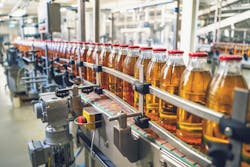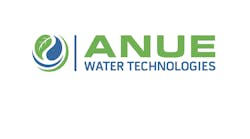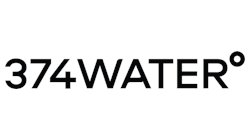(Washington DC — March 6, 2024) — A novel collaboration among federal and local regulators, major international beverage manufacturers, non-profit organizations, consulting engineers and water professionals has released a white paper titled “Advancing Water Reuse Within the Beverage Industry.”
In the white paper, the authors explore stakeholder engagement, regulatory, treatment and technology issues related to water reuse within the beverage industry, along with key hurdles and near-, medium- and long-term solutions to advance water reuse practices at beverage manufacturing plants. If the near-term solutions are implemented, then beverage manufacturers may be able to advance water recycling strategies at their facilities in due course. The white paper was developed under the National Water Reuse Action Plan (WRAP), a program coordinated by the U.S. Environmental Protection Agency (USEPA).
“We are so happy to have GHD and our action partners as part of the National Water Reuse Action Plan. This work is a great first step in understanding the regulatory and policy landscape of water reuse and the needs specific to the beverage industry,” said Dr. Sharon Nappier, national program leader for water reuse of EPA.
Water is essential to the beverage industry and is used in every facet of it, from cultivating ingredients to dispensing and serving beverages to consumers. Without sufficient water, beverage companies cannot produce their products. Water supply, quality, demand and wastewater generation are meaningful in this sector. Complex water challenges have motivated corporate personnel, regulators, consulting engineers, equipment and technology providers and consumers to seek and develop solutions to help the beverage industry optimize water usage and operate sustainably. Toward this end, water reuse offers a compelling opportunity for beverage manufacturers: by recycling water for non-ingredient (or non-product) purposes onsite, beverage manufacturers can minimize water demand and wastewater volumes, elevate operational efficiencies, reduce costs, and achieve sustainability goals.
“Our goal is to propose solutions that are practical and achievable,” said Holly Churman, GHD service line leader for water treatment and desalination, and a lead author of the white paper. “How can we move the needle, and truly advance water reuse in beverage manufacturing, in a year, two years? Our team’s knowledgeable, well-rounded perspectives informed our solutions to address important water challenges facing the industry today”
The white paper was developed by a diverse group of action leaders and partners under WRAP Action 5.7, a working group of the WRAP, and included representatives of GHD, USEPA, the U.S. Food and Drug Administration, the Idaho Department of Environmental Quality, the San Francisco Public Utilities Commission, PepsiCo, Inc., the Beverage Industry Environmental Roundtable, the WateReuse Association, the Water Environment Federation – Industrial Water Community and Antea Group.
The action leaders and partners identified five priority challenges, promising solutions and tactics to enable water reuse at beverage manufacturing plants over near-, medium- and long-term time horizons:
- Near-term tactics involve developing a glossary of terms for stakeholders in beverage manufacturing, to improve stakeholder communication and aflow chart of how to use the Hazard Assessment Critical Control Point framework, a risk assessment approach that informs regulatory decision-making, for water reuse in beverage manufacturing.
- A medium-term strategy includes organizing outreach events, such as summits, focused specifically on water reuse in beverage manufacturing to help resolve public perception issues.
- Another medium-term tactic is to develop a technical guidance document to inform treatment and monitoring designs, abating some engineering challenges resulting from current regulatory gaps.
- In the long term, commissioning intentional demonstration plants to test ideas and inform industry best practices can clarify important decision points and enable the uptake of water reuse systems at beverage manufacturing plants.
“The WateReuse Association is proud to help lead this important work to advance opportunities for water reuse in the beverage industry," said Patricia Sinicropi, executive director of the WateReuse Association. "Advancing water reuse in new industries requires convening diverse, collaborative teams of stakeholders to find solutions to complex challenges. This white paper helps chart a path for more fit-for-purpose water recycling and more resilient and sustainable business practices within the food and beverage sector.”
The action leaders and partners intend to convene in Spring 2024 to review recommendations, share results with the broader community, and determine the next steps, including detailed tactics and ownership of tasks, to help advance water reuse in the beverage industry.


